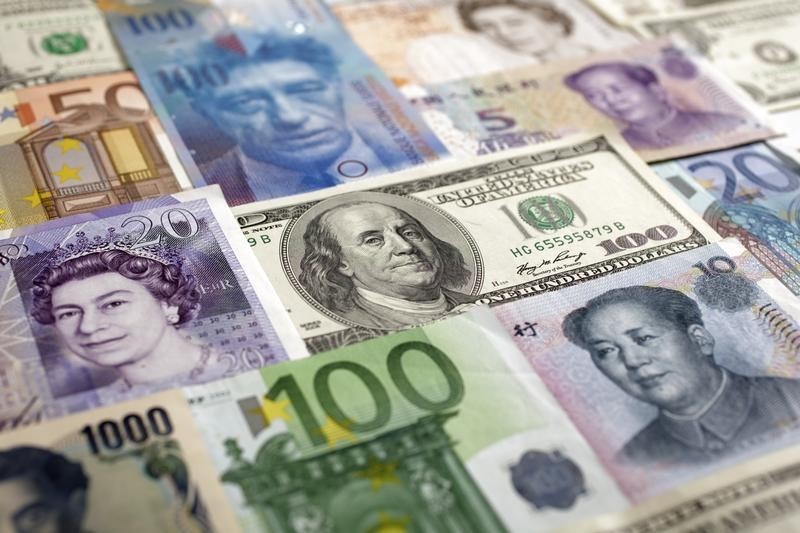By Wayne Cole
SYDNEY, Dec 4 (Reuters) - The Australian and New Zealand dollars eased off multi-month highs on Friday as the latest rush past major chart barriers left them looking stretched in the near term.
Both currencies have rallied in recent weeks as the prospect of a vaccine-fuelled global recovery next year boosted risk assets and toppled the safe-haven U.S. dollar
The Aussie was resting at $0.7426 AUD=D3 after reaching $0.7449, heights last seen in August 2018. Resistance is layered between $0.7453 and $0.7484.
The kiwi backed away to $0.7057 NZD=D3 having stretched as far as $0.7104, the first ascent atop 71 cents since April 2018. The next resistance barrier is $0.7150, with an ultimate target of $0.7395.
Some analysts cautioned a pause was due given the currency has climbed 6.8% in just five weeks.
"NZD/USD has reached its multi-week target of $0.7100, and while further near-term gains are possible, we note that it is getting technically stretched and we will be watching for signs of a corrective pullback," said Imre Speizer, head of NZ market strategy at Westpac.
"Longer term, we forecast $0.7200 by year end, and $0.7400 by mid-2021. The main drivers are improving global risk sentiment and an outperforming NZ economy relative to the U.S."
Australia's economy has also rebounded as containing the coronavirus allowed consumers to go shopping and house hunting.
Figures out on Friday showed retail sales jumped 1.4% in October as the state of Victoria reopened after its marathon lockdown, while card data from banks show spending surged through Black Friday and Cyber Monday.
That strength combined with a global shift to risk has seen Australian 10-year bond yields AU10YT=RR rise 21 basis points over the past month to 0.999%.
That left the spread over Treasuries at the widest since mid-October, even though the Reserve Bank of Australia (RBA) was busy purchasing long-term debt.
Jack Chambers, a rates strategist at ANZ, argued bonds could rally next week should the European Central Bank aggressively expand its asset buying program as some suspect.
"We think it increasingly likely that the Federal Reserve will do something in December or the beginning of next year," he added. "The most likely change is to focus its asset purchases towards the long-end of the curve."
Further out, yield curves globally should steepen next year assuming vaccinations allow economies to open up more, he added.
"Australian 10-year bonds are likely to outperform in this sell-off, we think, due to the combination of the RBA's yield curve anchoring rates and our expectation that QE will be extended into the second half of the year." (Editing by Ana Nicolaci da Costa)
